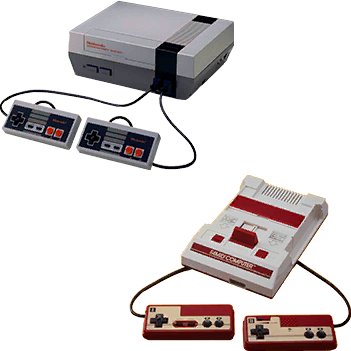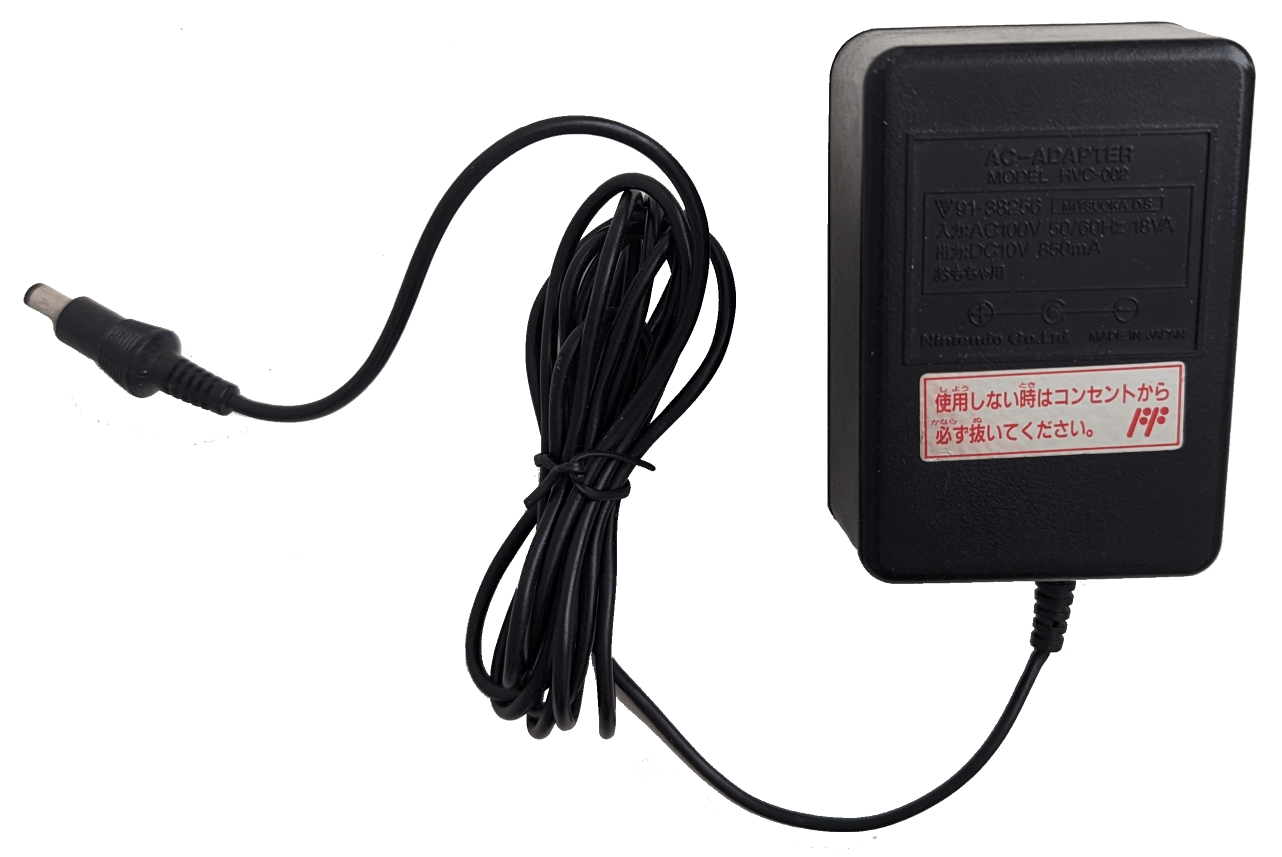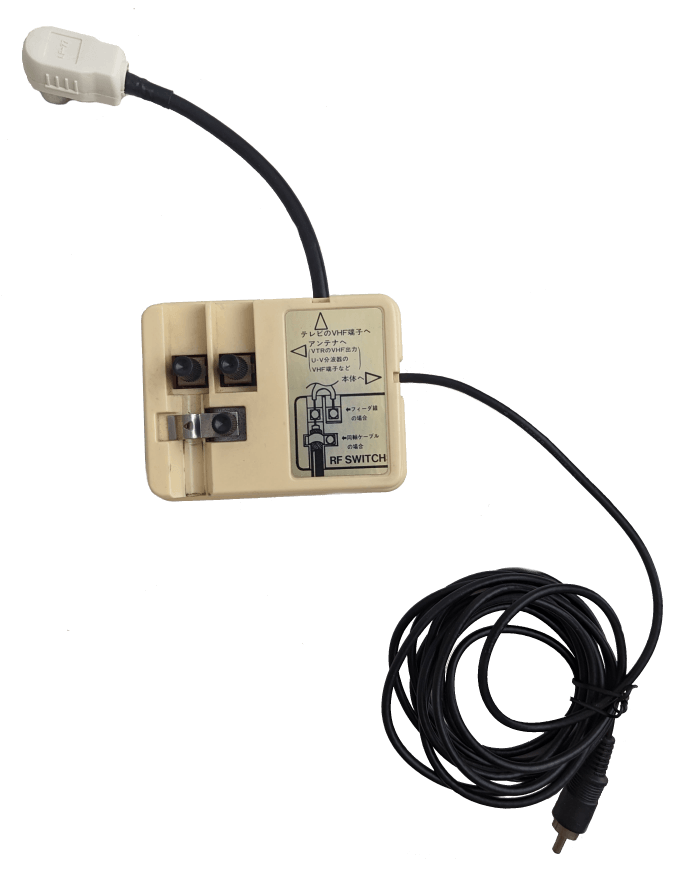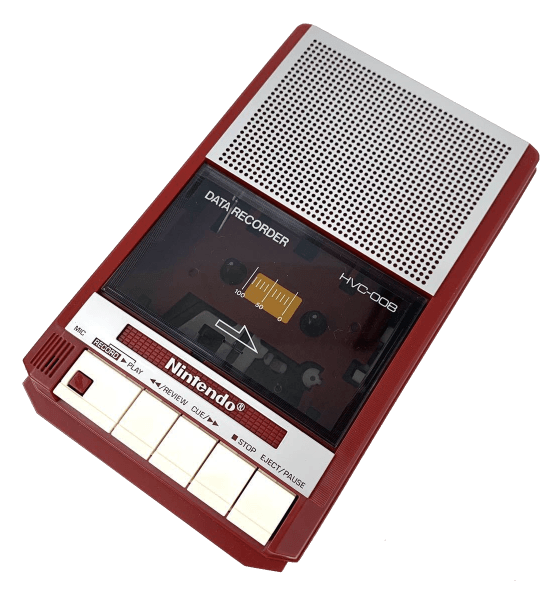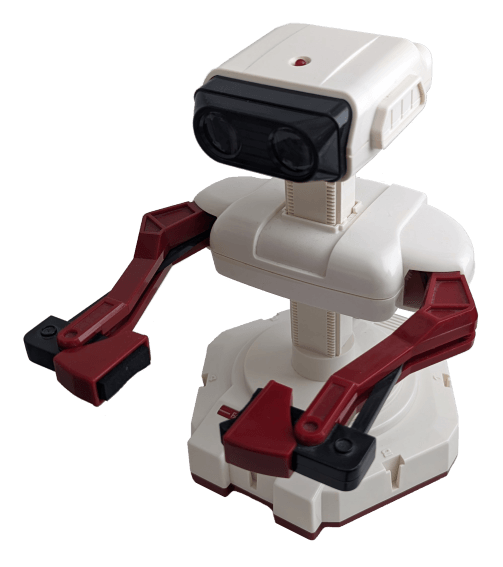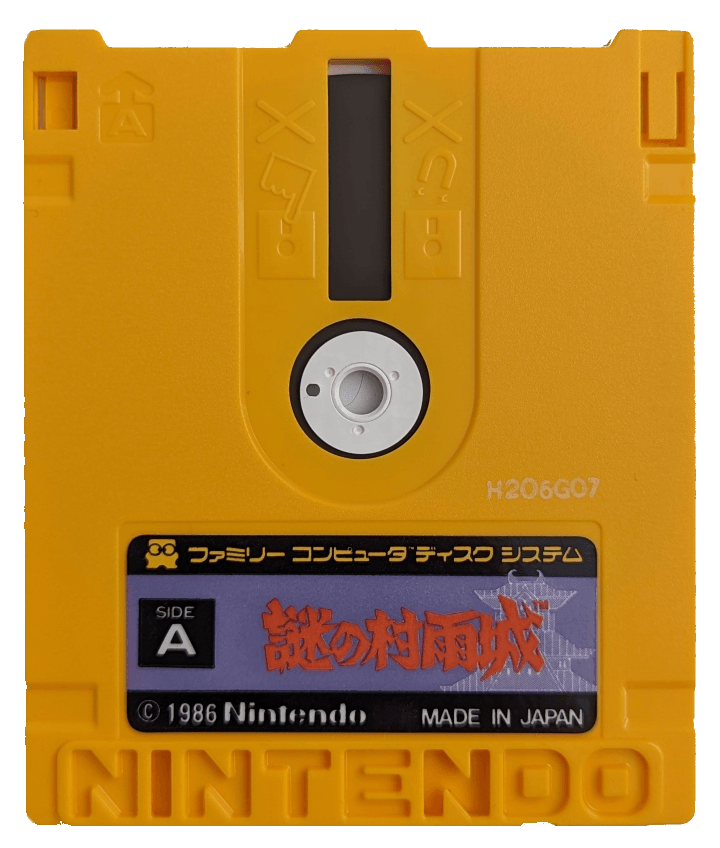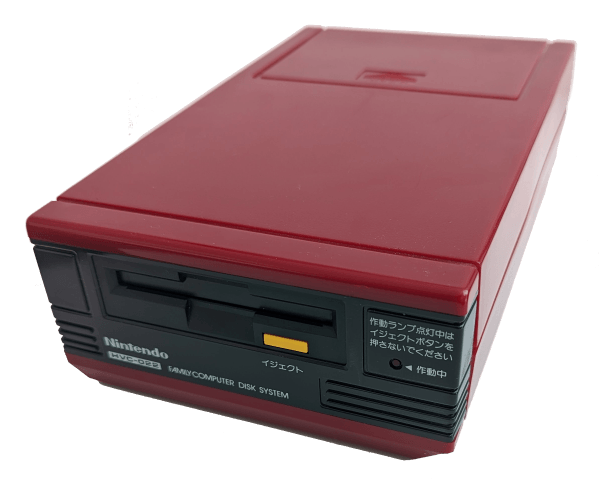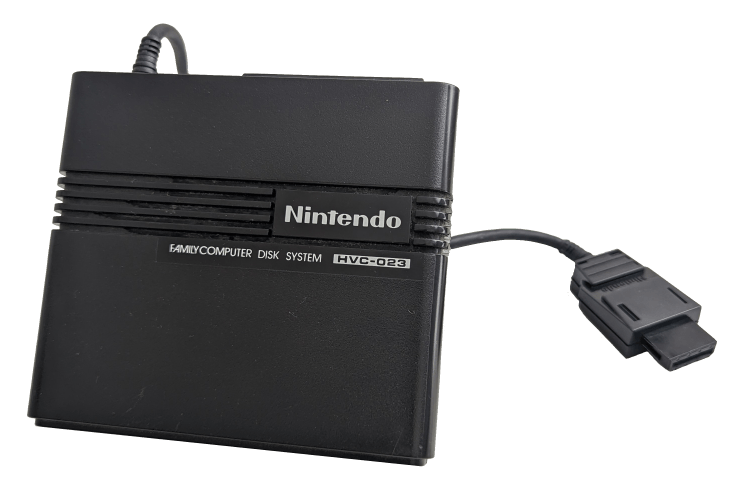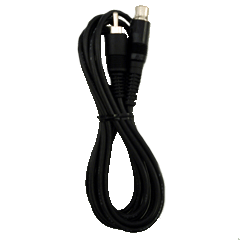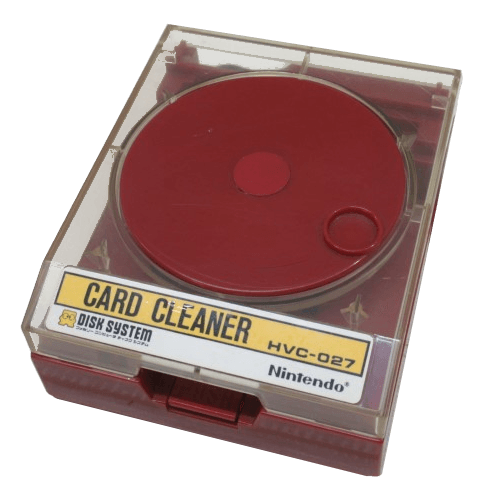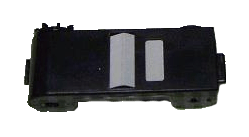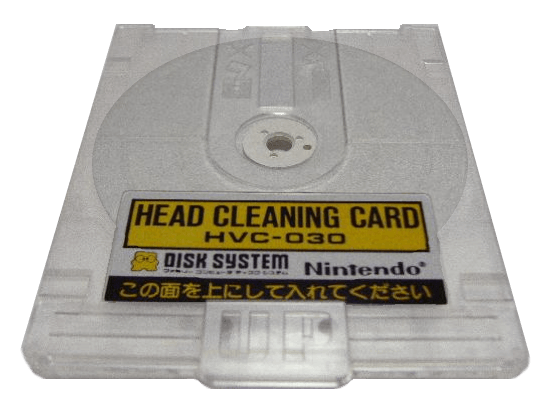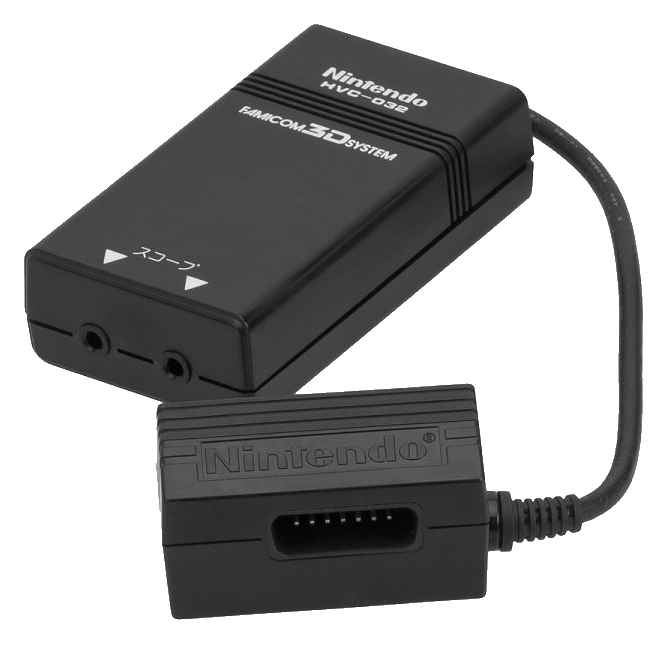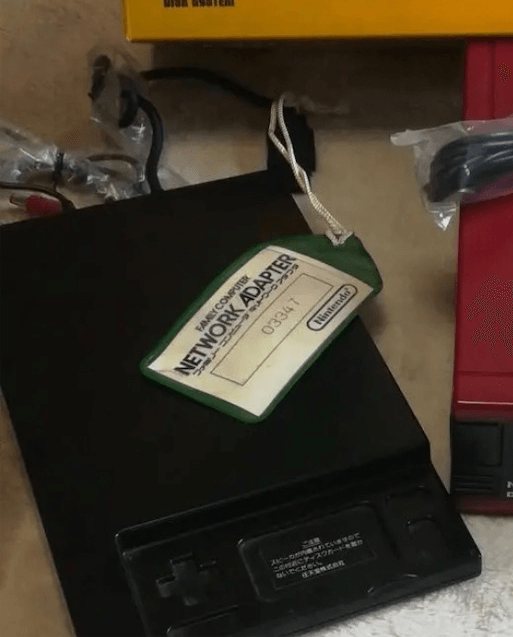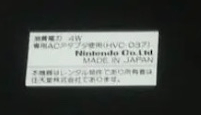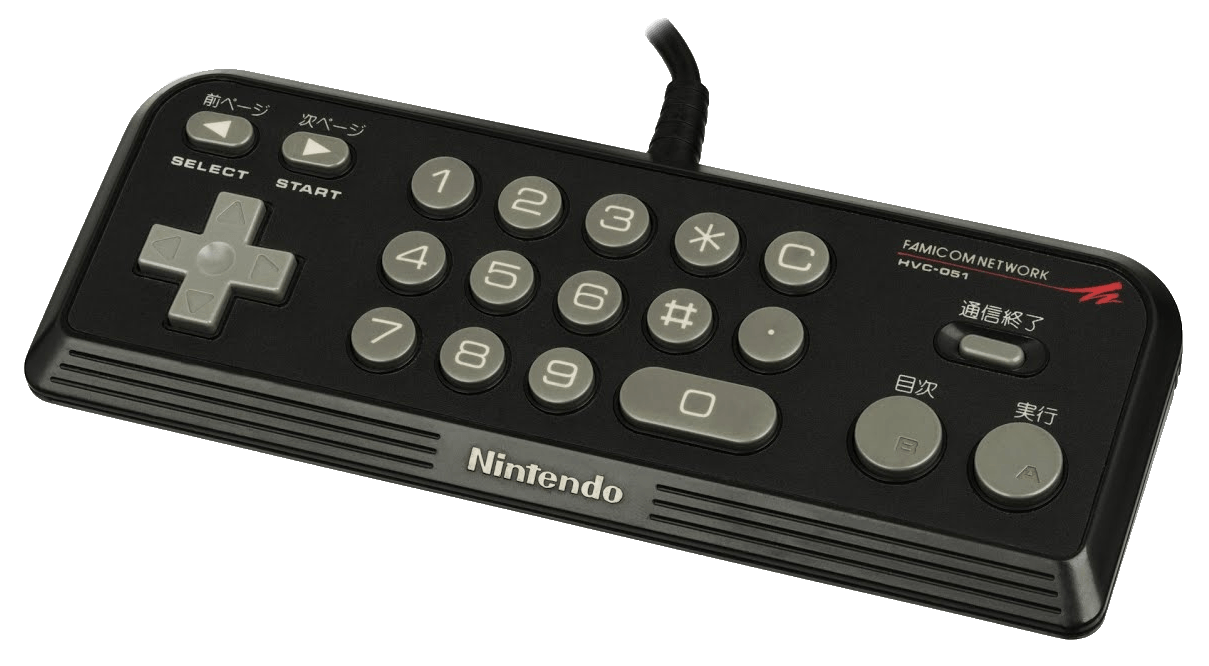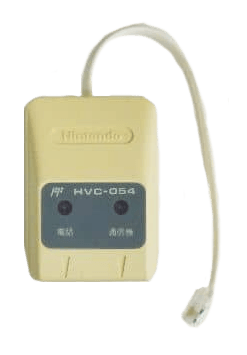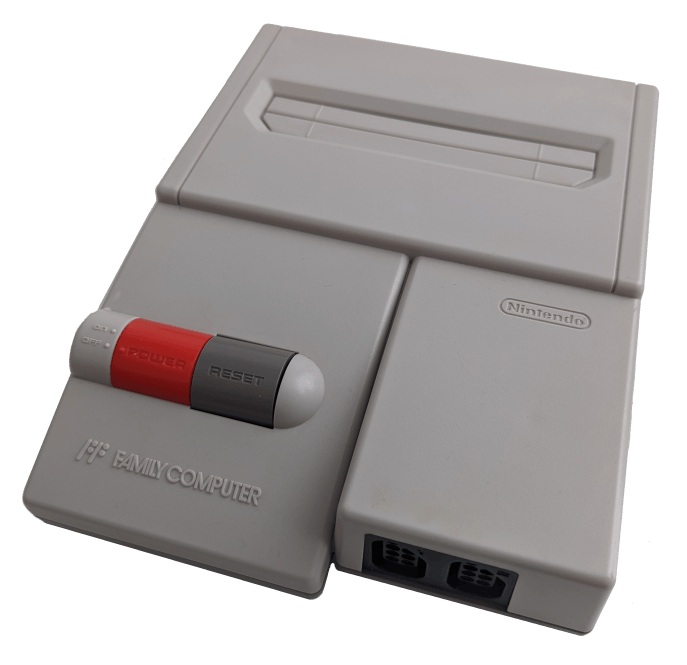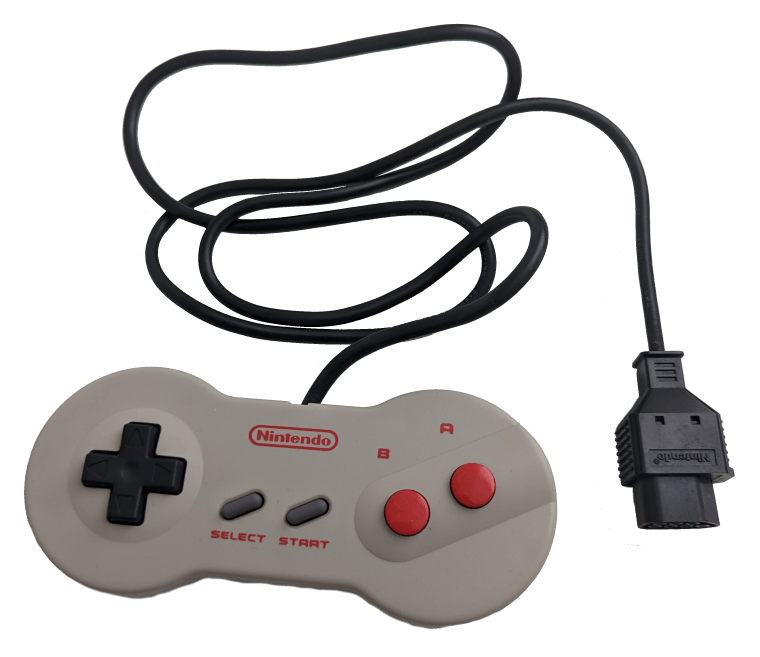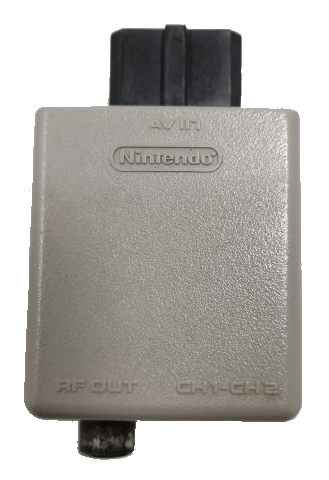Welcome to Luckless Heaven! This website is (soon to be) the biggest encyclopedia for Nintendo-related information on the Internet. Currently under construction.
Home console originally released in 1983 as the Family Computer
Called the Family Computer (Famicom) in Japan and the Nintendo Entertainment System (NES) in the United States and Europe, both with wildly different designs, these home-gaming consoles could play many games, simply by changing cartridges. They were so popular, they sparked a video-game boom.
HVC-001
Family Computer
The Family Computer, which is commonly abbreviated as "Famicom", is an 8-bit console that was created after Nintendo were presented a prototype ColecoVision and were so impressed, they strived to create their own console that could replicate the experience of playing their hit arcade game, "Donkey Kong", in the comfort of someone's home. Called the NES in the United States, the console was made to be both cheap and accessible, so anyone could buy one and immediately know how to play games on it. The Famicom has two controllers wired directly to it, along with an expansion port for special controllers. It was only capable of RF display and was coloured using Yamauchi's favourite colours.
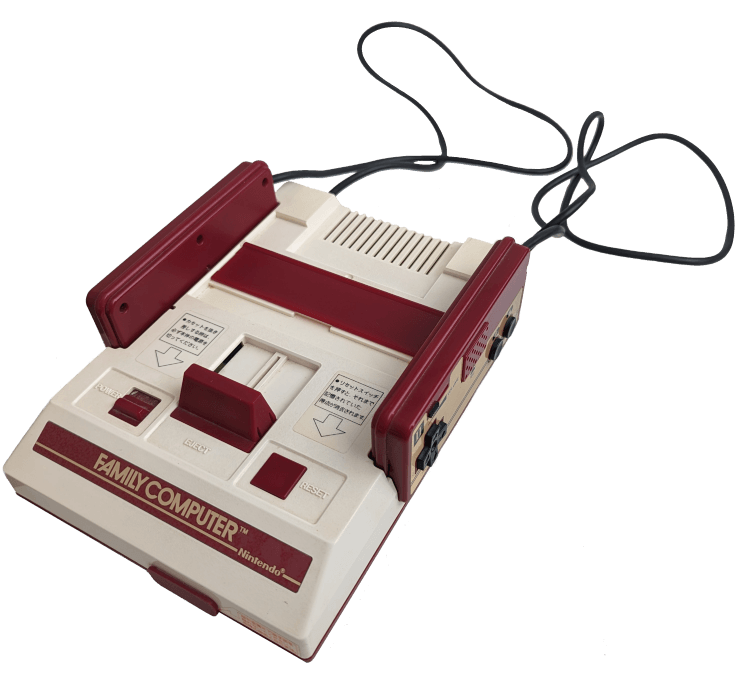
HVC-003
RF Switch
The RF Switch is a converter that allows the Famicom to use an RF display cable to connect to a television. Essential for older televisions that had no better video inputs than RF. the RF Switch differs in design between the Japanese version and the overseas version due to differing RF ports between regions. Both designs serve the same basic function. One cable connects to the TV, one cable connects to the console and then there's a circuit (HVC) or a port (NES) to allow another device to be connected to the TV, likely a set-top box or a video player.
HVC-004
75/300 OHM Converter
The 75/300 Ohm Converter is used with the HVC-003 RF Switch, in order to connect it to the television. The VHF cable, found at the top of the RF Switch, is manually wired into the 75/300 Ohm Converter, which then connects to the TV using a pair of screws on the back or by using a connector. The hardware code for this is displayed on the Famicom's box.

HVC-005
Kousenjuu Light Ray Gun
The Kousenjuu light-ray gun is a toy gun that can aim and shoot at the television, in order to influence the game. Designed after Nintendo's old toy, the Nintendo Beam Gun, which itself was based off of a real life gun, a Colt Single-Action Army revolver, this accessory is most associated with "Wild Gunman" in Japan, the game it was initially packaged with.
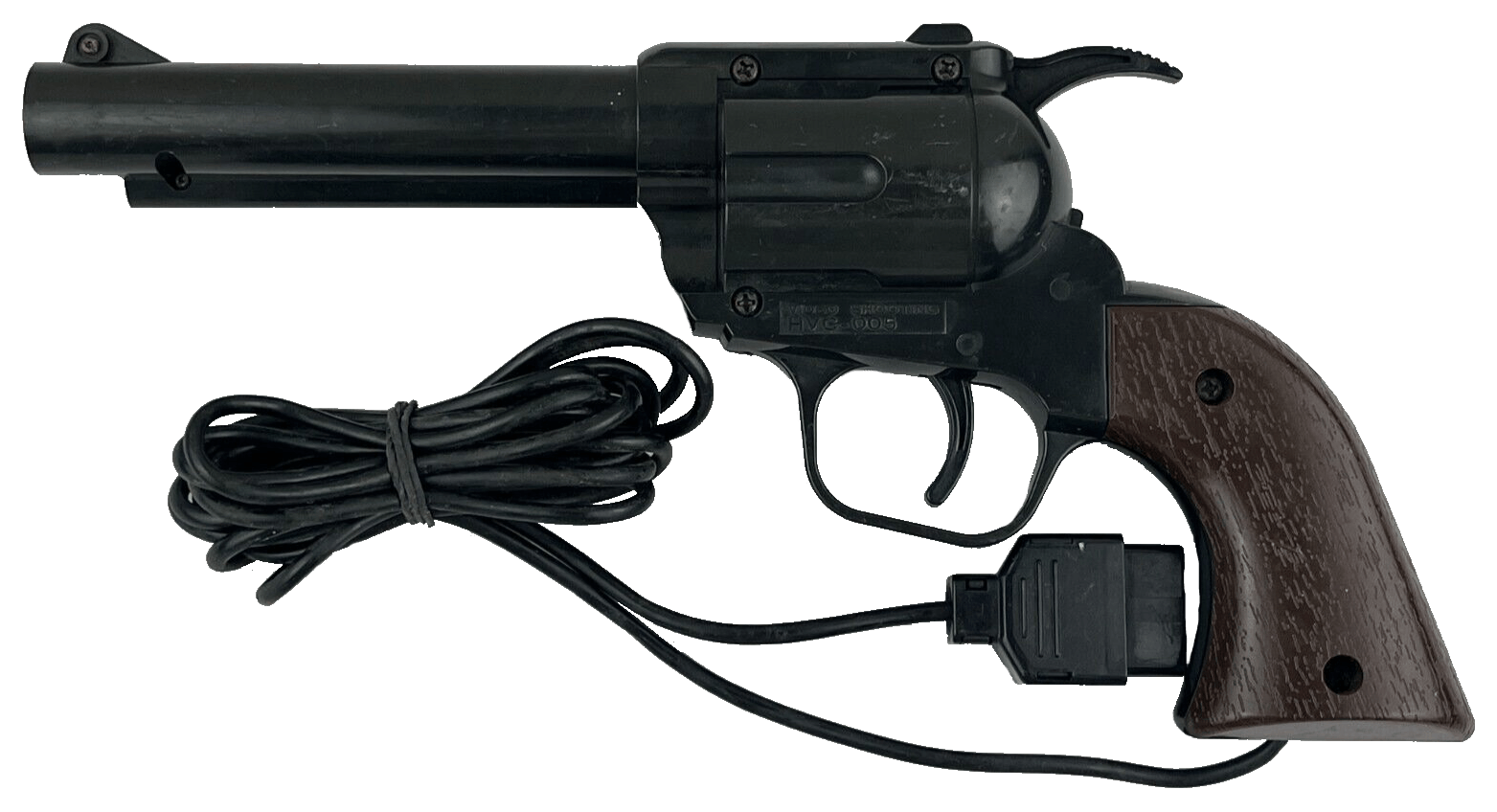
HVC-006
Kousenjuu Light Ray Gun Holster
A holster that is used to hold the Kousenjuu light-ray gun, this accessory was packaged with the game "Wild Gunman" in Japan only, to help replicate the gameplay of quickly drawing your gun during high noon.
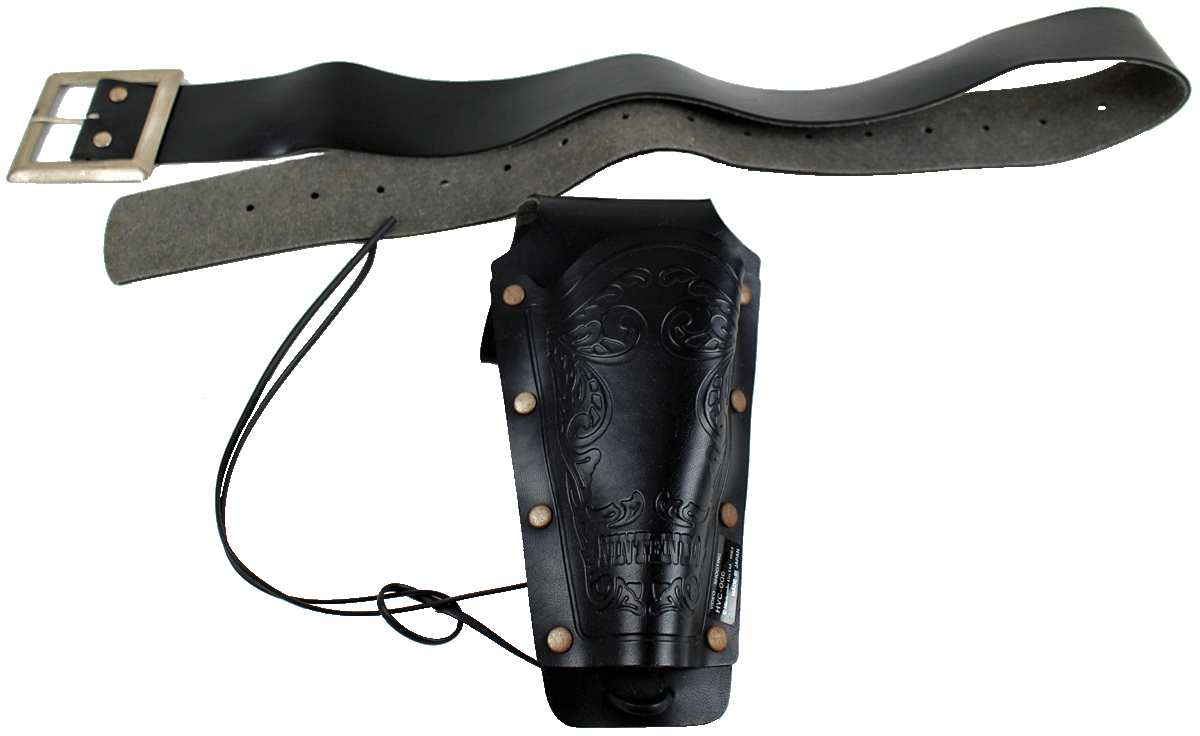
HVC-008
Data Recorder
The Data Recorder is a device that reads and writes data to cassette tapes. This is largely used for custom data, such as player-designed levels and race courses, so custom levels can be recorded to cassette tapes and sent to friends. This feature is only used by a few games, most notably "Excitebike", "Mach Rider" and "Wrecking Crew". This device was also packaged with "Family BASIC", along with the Famicom Keyboard, only in Japan.
HVC-009
Unidentified
HVC-010
Unidentified
HVC-011
Unidentified
HVC-012
ROBOT
ROBOT is a robot toy that operates off of four AA batteries and moves around, based on signals that flash on the television screen. The device largely uses the same technology as the Kousenjuu light-ray gun, but with more variation in what signals it recognises. ROBOT was released as way to further push the Famicom as not a videogame console, since the large number of lacklustre games on other consoles had made people wary of videogame consoles. This device helped to push the Famicom as more of a toy for children, though it only saw limited usage once released, only being compatible with its packaged game, "Gyromite", and the separately released "Stack-Up".
HVC-013
Unidentified
HVC-014
Unidentified
HVC-015
Unidentified
HVC-016
Unidentified
HVC-017
Unidentified
HVC-018
Unidentified
HVC-019
Unidentified
HVC-020
Unidentified
HVC-021
Family Computer Disk Card
The Famicom Disk Card is an alternate medium for playing Famicom games. While the Famicom primarily plays games via cartridges, with the Famicom Disk System, users were able to buy Famicom Disks, which allowed for bigger games due to larger storage, better sound quality, cheaper games due to the comparative low price of disks, and new game technologies such as the ability to save progress in larger games. For a time, Famicom Disk Cards replaced cartridges as the main way to play Famicom games, until cartridge technology caught up and subsequently overtook the capabilities of the Famicom Disk Card. This window of time so short, the United States and Europe simply used better cartridge technology and never had an equivalent to the Famicom Disk System, though it was considered. Famicom Disk Cards generally come in a yellow colour, though a blue colour is used for disk cards that were used with the Famicom Disk Fax machine, a service where high score data from blue disk cards is extracted and sent to Nintendo for use in official competitions.
HVC-022
Family Computer Disk System
The Famicom Disk System is a disk drive that connects to the Famicom via a special RAM adapter cartridge, used to play games via Famicom Disk Cards. It can be powered by its own AC adapter or powered by six AA batteries, if you have limited plug sockets to work with. The Famicom Disk System is also compatible with the AV Famicom, but not compatible with any model of NES from the United States or Europe. An equivalent accessory was considered for NES but scrapped as cartridge technology quickly surpassed disk technology.
HVC-023
RAM Adapter
The RAM Adapter is a special Famicom cartridge with built-in RAM, and a cable that connects to the Famicom Disk System. This cartridge holds the data of inserted Famicom Disk for the actual Famicom console to read and interface with. The RAM Adapter has a port on the back, to allow other accessories to connect to the console. However, it went completely unused by most players.
HVC-024
Unidentified
HVC-025
AC Adapter for Family Computer Disk Drive
The AC Adapter for the Famicom Disk Drive is slightly different from the regular Famicom AC Adapter (HVC-002). It is used to power just the Famicom Disk Drive, as the regular AC Adapter is not powerful enough to power both devices. The AC Adapter for Famicom Disk Drive outputs less power than the Famicom AC Adapter.
HVC-027
Family Computer Card Cleaner
The Famicom Card Cleaner is a device that cleans Famicom Disk Cards. The disk card is inserted into the device, and the user rotates the mechanism on the top of the device to spin the disk. The exposed part of the Famicom Disk Card is cleaned by the cloth of the Card Cleaner Cartridge inside (see below). This device was only sold in Japan, as Famicom Disk Cards were only sold there.
HVC-028
Family Computer Card Cleaner Cartridge
The Famicom Card Cleaner Cartridge is a small plastic cartridge and slots into the inside of the Famicom Card Cleaner device. It has an exposed length of cloth, which is used to clean the exposed section of a Famicom Disk Card. The exposed section of cloth can be cycled to a cleaner part of the cloth by turning a plastic disc on the left side of the cartridge. This accessory was sold seperately and bundled alongside the Famicom Card Cleaner exclusively in Japan.
HVC-029
Family Computer Disk R/W Head Cleaning Spray
The Famicom Disk R/W Head Cleaning Spray is a small spraybottle of cleaning solution that is sprayed on the below Cleaning Card, so that it can be inserted into the Famicom Disk System to clean the insides of the disk drive, called "disk read/write heads", which read data from, and write data to the disk. This cleaning set was again only released in Japan, as other regions did not have Famicom Disk Systems.
HVC-030
Family Computer Disk R/W Head Cleaning Card
The Famicom Disk R/W Head Cleaning Card resembles a transparent Famicom Disk Card (with no actual disk inside) so that it can be inserted into the Famicom Disk System to clean the insides of the disk drive. This cleaning set was only released in Japan, as other regions did not have Famicom Disk Systems.
HVC-031
Family Computer 3D System
The Famicom 3D System is a headset with active stutter 3D technology, that allows for players to play a limited number of Famicom games in 3D. This device works by having a screen for each eye. One screen shows gameplay for the left eye while blocking the right eye's view, then vice versa for the right eye. This process repeats so rapidly that the interruptions don't prevent the user from perceiving the two screens as one screen, and this makes the gameplay appear 3D. This accessory performed terribly and was never released outside of Japan, but is interesting as it seems to be Nintendo's first attempt in a long line of 3D technology, leading to the Virtual Boy and Nintendo 3DS. The only game Nintendo developed for the device is "Famicom Grand Prix II: 3D Hot Rally", with only six other third-party games compatible. One of those games, "Highway Star" by Square was published in the United States and Europe by Nintendo as "Rad Racer", though due to the 3D System not being released outside Japan, it instead used anaglyph (red/blue) 3D with a bundled pair of flimsy 3D glasses.
HVC-032
Family Computer 3D System Adapter
The Famicom 3D System requires a System Adapter to connect to the Famicom console. This adapter connects to the Famicom console via its expansion port on the front, and has two ports for the accessory's two 3.5mm phone jack connectors. The 3D System Adapter also has its own expansion port, which allows players to connect additional accessories whilst using the Famicom 3D System.
HVC-033
Unidentified
HVC-034
Unidentified
HVC-035
Family Computer Network Adapter
A very mysterious peripheral, the Famicom Network Adapter seems to be an early version of the Famicom Network System (HVC-050). This peripheral would be placed underneath both the Famicom console and Famicom Disk System, and would connect to the console via the RAM Adapter (HVC-023)'s back port, making this the only official peripheral to make use of the port. Once hooked up, this device would allow users to connect to Nintendo's servers via a proprietary dial-up service, and perform various online tasks, like buying/selling stock, booking tickets for trains or the cinema, or even buying clothes and other goods. However, only the stock trading element is known to have been implemented. The device itself is longer than even the Famicom Disk System, included its own built-in speaker, and has a small empty tray at the front, where users could place an early version of the Famicom Network Controller when not in use. This device appears to require its own AC Adapter for power, similar to the Famicom Disk System. Not much else is known about this device, or how widely distributed it was, but my current speculation is that it was rented out to stock traders to test the Famicom Net service. Only one of this device has been found; sold on Mercari with a "rental" sticker. The seller commented on this blog, confirming that the original owner used it to trade stocks.
If anyone owns one of these devices, PLEASE GET IN CONTACT.
HVC-036
Unidentified
HVC-037
AC Adapter for Family Computer Network Adapter
The AC Adapter for the Famicom Network Adapter is used to power just the Famicom Network Adapter, as the regular AC Adapter and the AC Adapter for the Famicom Disk System are not powerful enough to power all three devices simultaneously. The actual specific details of this AC Adapter are unknown, as the device wasn't released officially and hasn't been found anywhere. It's existence is confirmed by the underside of the Famicom Network Adapter, which mentions using a HVC-037 AC Adapter for power.
If anyone owns one of these devices, PLEASE GET IN CONTACT.
HVC-038
Unidentified
HVC-039
Unidentified
HVC-040
Unidentified
HVC-041
Unidentified
HVC-042
Unidentified
HVC-043
Unidentified
HVC-044
Unidentified
HVC-045
Unidentified
HVC-046
Unidentified
HVC-047
Unidentified
HVC-048
Unidentified
HVC-049
Unidentified
HVC-050
Family Computer Network System
The Famicom Network System is an add-on that connects to the console via the cartridge slot. The device has its own cartridge slot, which takes "Tsuushin Cartridges"; after lifting up the transparent hood at the front of the device, these cartridges can be pushed into the slot, similar to the NES cartridge slot. The Famicom Network System won't boot up or do anything without a Tsuushin Cartridge inserted. Underneath the device, there are three ports: an ethernet port, and two telephone ports. The main connection is intended to go through the left telephone port, while the right telephone port can be used to connect a phone, which could be utilised by compatible software. The manual states that the ethernet port exists as a potential expansion port, and there's also another hidden expansion port, next to the connector that connects the Network System to the actual console. Also next to that, is a switch that allows users to switch between two phone lines, along with a pair of lights on the front of the device that light-up when the device is actively using one of the phone lines. Once the Famicom Network System is fully hooked up, this device would allow users to connect to Nintendo's servers via a proprietary dial-up service, and perform a few online tasks, like buying/selling stock and betting on horse races. Other services were planned, but the Famicom Network System struggled to compete with actual personal computers. The add-on never released outside of Japan due to concerns during an American test run that the device encouraged children to gamble.
HVC-051
Family Computer Network System Controller
The Famicom Network System Controller is a controller specifically designed for network use, which came bundled with the Famicom Network System. It has directional pad and nineteen buttons. The directional pad is used for menu navigation, there's the usual A and B buttons for selecting options or opening a main menu respectively, and there's a Select and Start button that navigate left and right through menus. There's also a "Disconnect" button that is possibly used to terminate the Network System's connection in an emergency. The other fourteen buttons form a generic number pad commonly seen on PCs and phones. The controller connects to the Famicom via the consoles front expansion port. The inclusion of the standard A/B/Start/Select buttons and D-pad mean that this controller can also be used with regular Famicom games.
HVC-052
Unidentified
HVC-053
Telephone Cable
The Telephone Cable can be connected to the left telephone port of the Famicom Network System, and to a home's telephone plug, to allow the console to connect to Nintendo's proprietary dial-up service. The cable is four meters long, and was bundled with the Famicom Network System. It was also bundled with the Nintendo 64's 64DD add-on, where it could connect the console to the Randnet service via the Modem Cartridge (NUS-029), and the GameCube's Modem Adapter (DOL-012), which allowed certain GameCube games to be played online.
HVC-054
Telephone Switch
The Telephone Switch is a small device bundled with the Famicom Network System, that has two telephone cable sockets, and a telephone cable connector. It basically allows for two devices to connect to the home's main telephone line at once, meaning that users can have their Famicom Network System and their telephone connected at the same time, without needing to unplug or replug their devices constantly.
HVC-101
AV Family Computer
The AV Famicom is a downsized variant and later model of the Famicom. It has most of the same features as the original console, but lacks the ejector mechanism, requiring cartridges to be manually pulled out, controller ports instead of wired controllers, meaning more flexibility in useable controllers, and, most notably, a proprietary AV port instead of an RF port, allowing users to play Famicom games with a much better, more consistent video quality. This model is popular overseas, as it's compatible with overseas AV cables, whereas the original model's RF output is only usually compatible with Japanese televisions.
HVC-102
AV Family Computer Controller
The AV Famicom Controller is a detachable wired controller, that use the same connections as the NES controllers. They have the same buttons as the usual Famicom/NES controllers, but have an improved, rounded design similar to the Super Famicom/Super NES controllers. Two of these controllers were bundled with the AV Famicom. These controllers are no longer distinguished as a P1 or P2 controllers, like the original Famicom controllers, meaning the microphone feature is no longer available.
HVC-103
RF Modulator
The RF Modulator is a converter that allows the AV Famicom to use a RF display cable to connect to a television, as the console no longer has a direct RF port, only the proprietary AV port. The RF Modulator is essential for older televisions that have no better video inputs than RF. This peripheral also includes a switch that changes which channel the RF signal is broadcast to.

